Android versions. Android SDK download. How to use Android SDK Manager - let's try ourselves as a developer
This article will help all beginners and owners of Android devices get acquainted with SDK. You will learn how to install android sdk. Why is this needed: firstly for hacking, secondly for access to the system part of the firmware and its subsequent change, thirdly for getting root right
There is a tool in the SDK ADB (Android Debug Bridge) Debugging Bridge for Android or another interface for Android debugging, with it you can:
- View Android system log.
- View which Android devices are connected and can work with ADB.
- Install programs on Android devices.
- Uninstall programs on Android devices.
- Copy files from Android device.
- Copy files to Android device.
- Delete data partition on Android device.
- Clear data section on Android device.
- Flash the data partition on your Android device.
- Overwrite data partition on Android device.
- Execute different scripts Android control device.
- Manage some network parameters Android devices.
- And much more.
SDK (software development kit)- a set of development tools that allows software specialists to create applications for a specific software package, software basic development tools, computer system, game consoles, hardware platform, operating systems and other platforms.
Installing the Software Development kit (SDK)
Go to the folder adt-bundle-windows, then to the folder sdk and launch SDK Manager.exe. In the window that appears, you are prompted to select components for downloading via the Internet. On the right side for each component it is indicated whether it is already installed or not. Choose required packages for work. Preferably as in the picture. If you have other versions of Android, then select the ones you need. When all the necessary packages are selected, click the button Install X packages bottom right. In a new window we confirm that we agree to download all this - Accept All. And here you can see the size of the package and refuse anything. Press Install- the indicator ran and the log opened - the download began. After some time (depending on the number of selected packages), the following message will appear: . Installation completed. Close the log and SDK Manager.

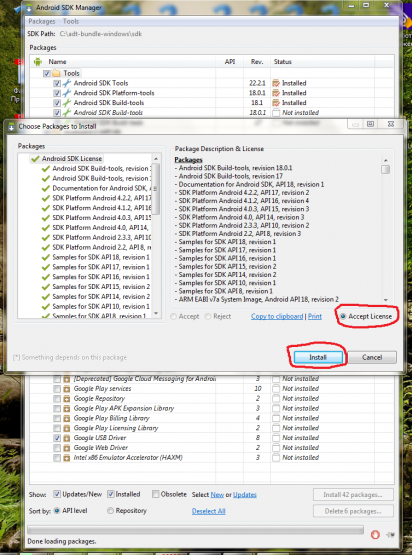

Then we go to the folder, this address needs to be copied (the files should be in this folder adb.exe and others)
Program folder
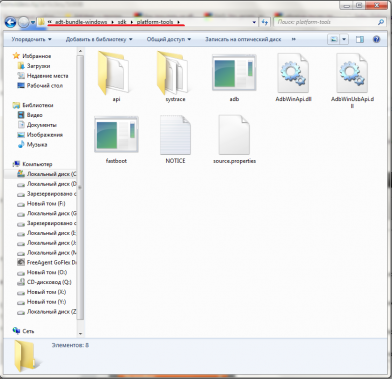
For Windows XP: go to the control panel, system properties, advanced, Environment Variables
For Windows Vista/7: go to the control panel, system, Extra options systems

We find the item environment variables and find the item Path, click edit and without deleting anything, add your path separated by a semicolon C:\adt-bundle-windows\platform-tools(see picture). Click OK.


Now let’s check if everything is working: go to Start, launch the command line (preferably as an administrator for Windows Vista/7) and enter adb command and we get the following.
Result
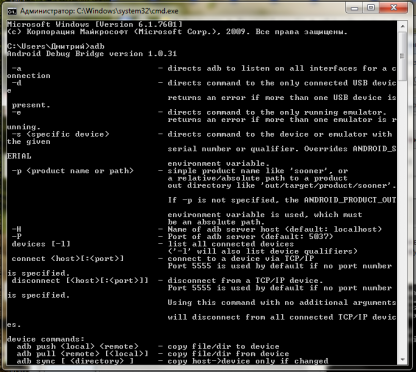
If you received it, then everything works great.
ADB Commands
Here is a list of useful commands:
adb devices - View a list of devices that are already connected to the computer
adb wait-for-device - Wait for the device to connect
adb get-serialno - View serial number devices
adb logcat - See what's happening inside the device
adb logcat > c:\logcat.txt - The command will save all changes to a file
filters for logcat
V - Verbose (lowest priority, default mode)
D - Debug (debugging)
I - Info (information)
W - Warning
E - Error
F - Fatal (critical error)
S - Silent (highest priority, silent mode, do not output anything)
Example adb logcat *:W - Display only system error messages
adb logcat [-b ] - Displays system buffer information
radio - View the buffer containing messages from the radio/telephony module.
events - View a buffer containing messages of related events.
main - View the main log buffer (default)
Example adb logcat -b radio
adb reboot - Reboot the device.
adb reboot recovery - Reboot the device into recovery mode.
adb reboot bootloader - Reboot into bootloader mode.
adb shell cat /proc/mtd - View information about the “partitions” of the device’s memory.
adb shell df - View information about partitions and free resources.
adb push - Copy a file to the device.
adb pull - Copy a file to your computer.
adb install [-l] [-r] [-s] - installing the application
Example adb install from:/adb/app/autostarts.apk Install the autostarts.apk file located in the /adb/app/ folder on the disk with:
filters
-l Block the application.
-r Reinstall the application, saving the data.
-s Install the application to the memory card.
adb uninstall - Uninstalling an application.
Example adb uninstall autostarts.apk
Android SDK Manager is an environment for developing applications for the Android operating system. This program allows you to create applications that use the capabilities of the camera, Wi-Fi, Bluetooth, GPS data, 3G. Android SDK Manager also supports browsers, various formats video and audio. The program gained popularity thanks to its built-in module, which allows you to test developed applications on different versions Android.
How to install Android SDK Manager?
In order to start using the Android SDK Manager program, you need to install it initially. To do this we do the following:
- Download the SDK Manager archive to your device.
- At the same time, we launch the installation itself latest version Java Development Kid on your PC and follow the instructions.
- From the archive we start unpacking the “SDK Manager” file.
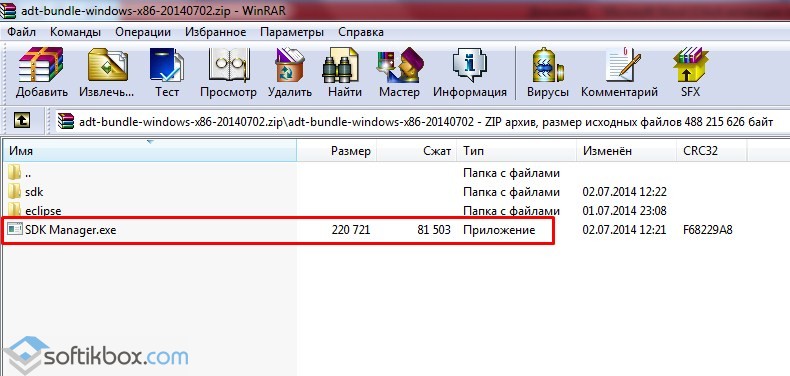
- If you were unable to unpack, you should create a folder “Android” on drive C and unpack using Total Commander all files from the archive.

- Next, run the “SDK Manager.exe” file. Within a few seconds the working program will appear.

- However, you cannot work with the program yet. You need to install Eclipse. It is in the archive.


- You cannot install this element from Total Commander. You need to create on drive C in the “Android” folder new folder with the name "Workspace" and place all the contents of the folder.

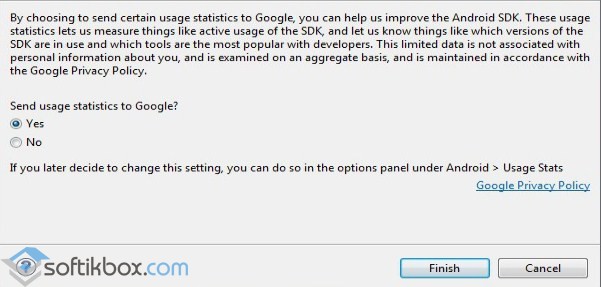
- Next you need to update the program itself. To do this, click “Deselect All” in the menu so as not to install all versions of Android.

- The “Update” button will now become active. We mark the version of our Android OS. And click “Install”.
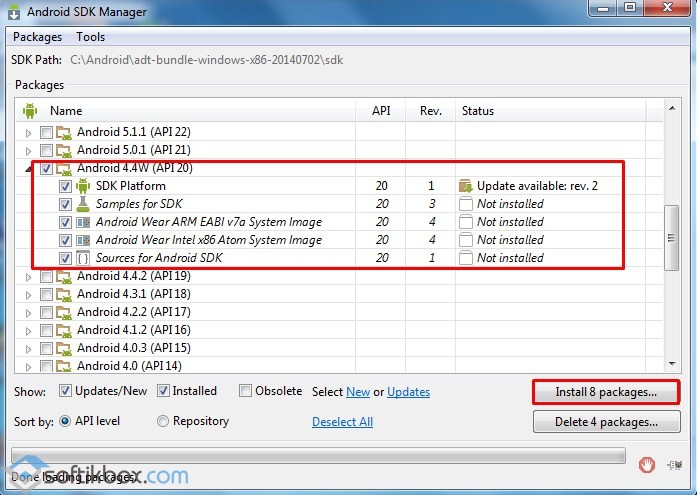
- In the new window, check the “Accept License” box and click “Install”.

- We are waiting for the installation of Android SDK Manager to complete.
You can also learn how to install and configure the program from the video:
How to properly install Eclipse SDK Manager and Android Studio program?
Users often have problems installing the Eclipse component. Often it comes complete with Android program SDK Manager. However, it can be downloaded separately from the developer’s website, after selecting the version and bitness of Windows.
Installation of this element next:
- Download and unpack the archive into Windows folder, which is on drive C.
Important! There is a known problem with unpacking the Eclipse archive. We recommend using the program or for this purpose. Before you begin unpacking the archive, you need to install Java.

- If it was not possible to extract to the specified folder, some experienced users mark the success of the action if the “Program File (x86)” folder is selected.
- Next, run the exe file.
However, this method does not always work and errors often occur.
Taking into account reviews from users of the program and their recommendations, we suggest that you familiarize yourself with 100% way to install Eclipse:
- Enter in Google request"Java SE Runtime". Open the first link.

- Select the latest version of the program in accordance with the system bit depth.

- The archive will begin downloading. We go back to the search engine and enter “Android SDK”. Select the first link again.

- Open the page and go down to the “SDK Tools” section. Here we select “Includes Android SDK”

- We accept the terms license agreement and click “Download”.
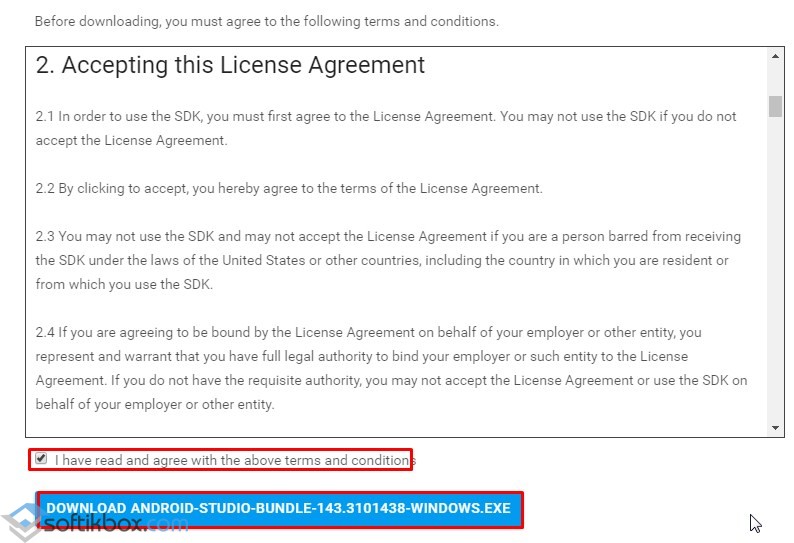
- The file will weigh more than 1.2 GB. Therefore, while the file is downloading, install Java.
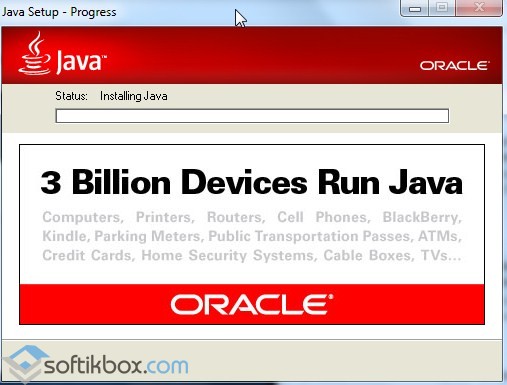
- Now let's install Android Studio. On drive C you will need up to 4.5 GB of free memory.
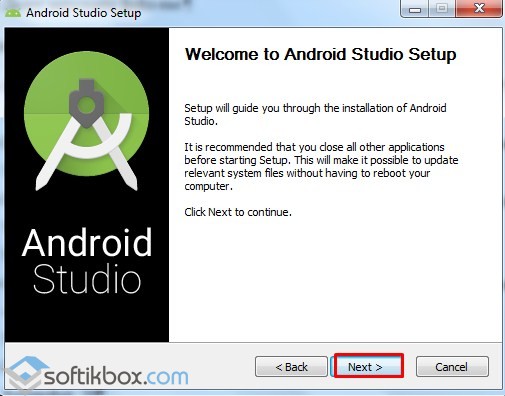
- Mark the required elements.

- We accept the terms of the license agreement and click “Install”.

- You need to select the installation type. Select “Standard”.

- The installation of the program is complete.
- Now you can install Eclipse IDE without any problems for Java Development. Run the .exe file from the archive. The program will create the desired folder. Just follow the instructions.


- The program has been successfully installed.

Important! Eclipse can only be installed if you follow the above guidelines. Otherwise, the error sdk tools directory is missing will appear.
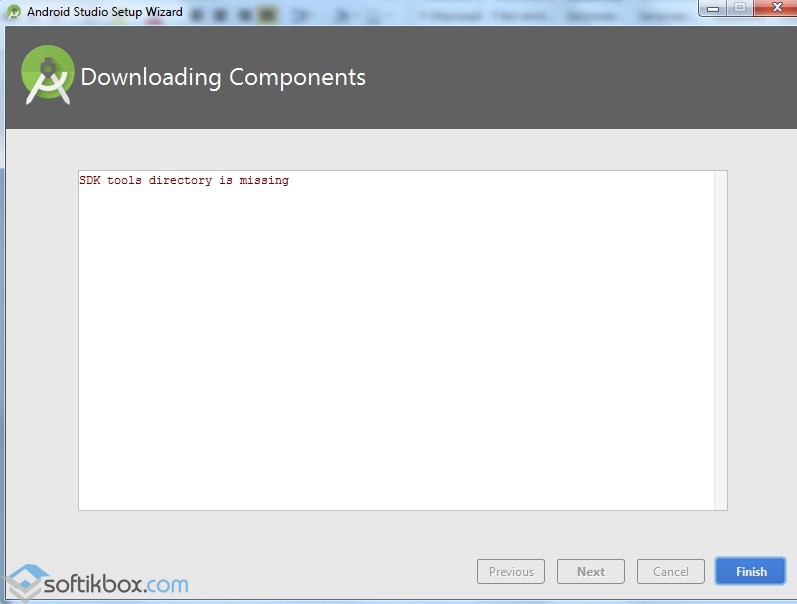
What should I do if the SDK tools directory is missing error appears?
We encountered the error sdk tools directory is missing during the installation of Android Studio. It arose due to an uninstalled Eclipse component. So if you are trying to install a program before installing Java and Eclipce, be prepared to run into this problem.
This problem can also occur when saving a project. In this case, in the program menu you need to click “Configure”, “Project Defaults”, “Project Structure” and copy correct address C:/Users/user/AppData/Local/android/SDK.
In the first case, when an error occurred during installation of the program, this means that the “Tools” folder is missing. It is worth removing the program completely, freeing up to 5 GB of memory and installing the program again according to the instructions for Eclipse.
Android SDK is a robust software development kit created by Google to provide developers with a complete set of tools for creating Android applications.
Android SDK Features
The Android SDK has a decent set of libraries and development tools to help programmers create and test applications. A solution for new or inexperienced Android developers is ADT Bundle. There is large collection utilities, including
- Eclipse;
- Android Platform Tools;
- last Android image systems.
The Android SDK assumes that developers already have Eclipse (officially supported by the IDE), JDK (Java Development Kit), and Android plugin Development Tools (optional, but recommended). In other words, the SDK includes only basic utilities for working with Android applications.
Android SDK Features
Initially the SDK does not contain Android platform and any third party components. In order to get them, you will have to run the SDK manager and install at least one platform along with the proper tools. The reason for this is very simple - platforms are constantly updated to support new features and packaging them into an SDK all the time will be quite expensive, not to mention the size of the final package. That is why Google company I made a simpler decision. Of course, you'll need an internet connection, but who doesn't have one these days? This way you can also stay up to date with the latest features of the platform.
In addition, the SDK supports older versions of the platform, starting from Android 1.1 to the latest version. This allows developers to create apps for older devices and test them for compatibility with the latest platforms.
Overall, the SDK is great helper for Android developers, although aimed at experienced developers.
Download Android SDK You can right now via the appropriate link on this page.
Such a popular operating system as Android cannot do without powerful and simple means development. And this is where the Android SDK (Software Development Kit) shows its best side. Today we will install the SDK and see what it can do. This will be a series of articles about developing applications and games for Android
Preparing for installation
Android SDK supports most modern operating systems based on x86 and x86_64 architecture, including including Windows, many Linux distributions and Mac OS X. Also must be installed on the PC Java Development Kit (Java 7 or Java 8), which will definitely be required for many SDK features, because Android is inextricably linked with Java.It is worth noting that for the built-in Android emulator you need good hardware on a PC, as, in principle, for others modern means development.
Installation using Android Studio
Android Studio has been around for a long time - the official IDE (Integrated Development Environment) for Android development. Everything you need is already included and can be installed in one click. You just need to install the IDE and you can also use all the features of the SDK, integrated within the development environment.
You can download Android Studio from the official website. There you can also find many useful guides on working with the Android SDK, but, unfortunately, they are available exclusively on English language.
Installing a separate package
If you don't expect to use one powerful tool like Android Studio or you already have Intellij IDEA installed, on the basis of which this development environment works, then you can install the Android SDK separately. However, this installation method will not provide any other advantages and it is recommended to use the previous method.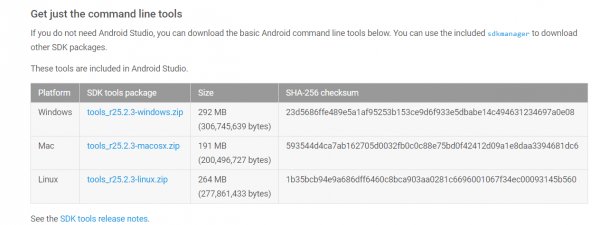
To download a separate package of tools for development without an IDE, you must use website Android Developer . Ignoring all possible mentions of Android Studio, we go down to the very bottom of the page and find the section “Get just command line tools” - you can also use the search on the page. After downloading the appropriate package for your operating system, just unpack it to any storage location convenient for you - it is also recommended to specify the location of the SDK in Intellij IDEA (Project Structure > SDK).
Launch and opportunities

To gain access to everything Android functionality SDK is enough to run the batch android file, if you are running on Windows, or in the terminal, run the command “android” in the “tools/” folder of your SDK to run on Linux and MacOS X. You will be prompted to install the tools for different versions API, the more tools are installed, the better. Downloading packages may take a long time depending on your system and internet connection speed.
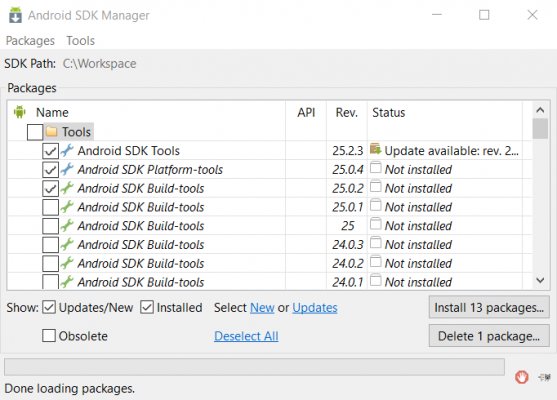
Let's move on to a description of the main tools:
- Platform-tools includes basic Android interfacing tools such as ADB, fastboot and systrace. Android Debugging Bridge will help you track down errors in the operation of applications on your smartphone, as well as perform some actions on working with APK; fastboot, familiar to all fans of flashing firmware for their Android devices, works in tandem with ADB and helps to get the device working before loading the OS, and systrace is able to analyze the speed of processes in the operating system;
- Build-tools works together with Platform-tools, but can be updated separately. This includes utilities such as ProGuard to protect your APK files, JOBB to work with *.obb extensions, and Zipalign to optimize your finished applications;
- In addition, the SDK provides an advanced Android OS emulator, in which you can test any applications and try out the functions of the latest Android versions. However, for high-quality emulation it is necessary good iron on PC, it is also recommended to use x86 emulation.
